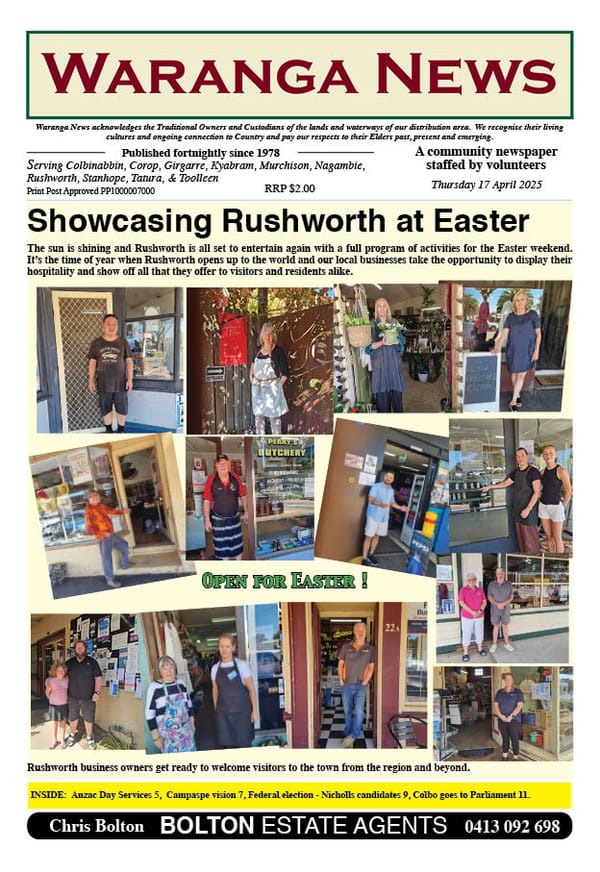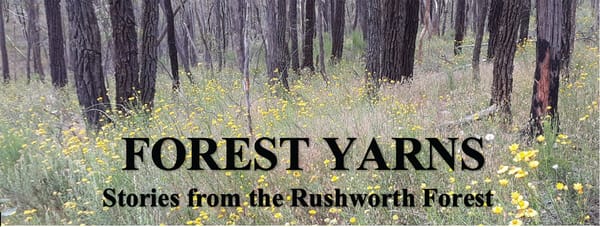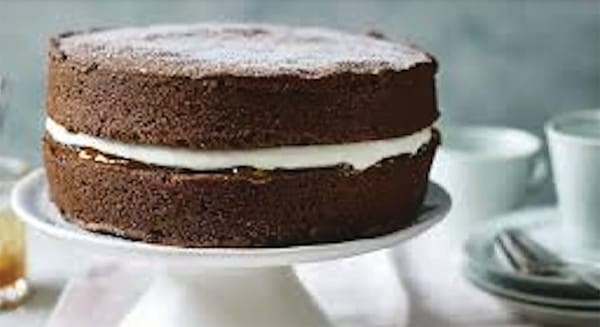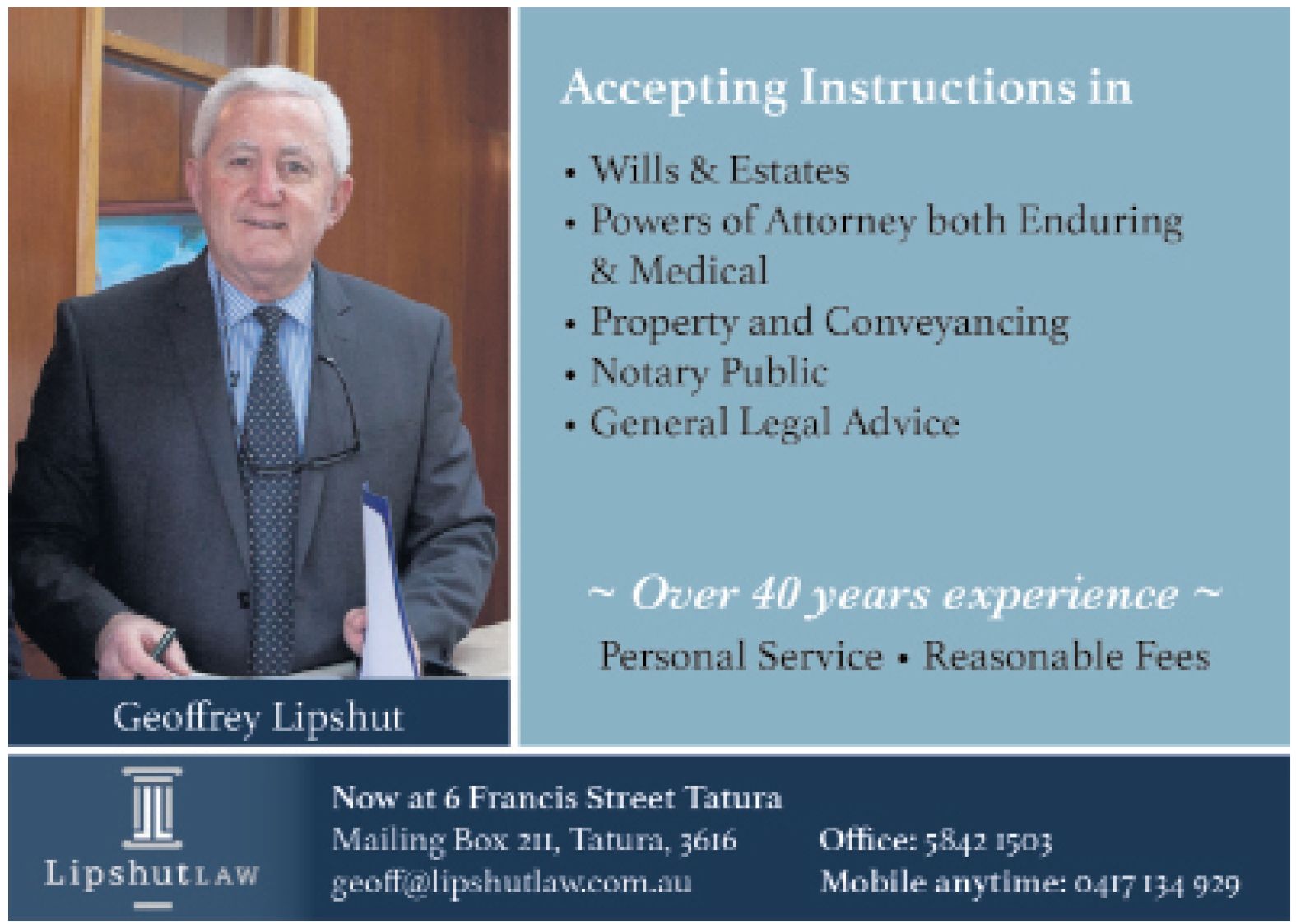Rushworth Brothers-In-Arms
Rushworth brothers Alan and Bruce Brown both served our country overseas in World War II.
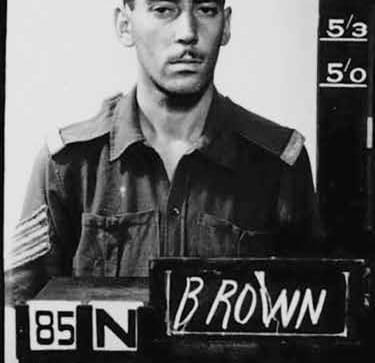
Their military careers followed similar paths, in that both were first called up and served in the militia (Citizens Military Forces or CMF) before joining the AIF.
The boys were born to long-established
Rushworth families. Their father Christie
Brown (Junior) and Elizabeth (nee Crothers)
are buried in the Rushworth cemetery having
lived in the town all their lives. Around the
time of the war, they were garage proprietors,
living in Stanhope Road. By the late 1940s,
Christie listed his occupation as farmer.
Like many people in Rushworth at the
time, some of the boys’ grandparents had
migrated to Australia. On their father’s
side, Christie Brown Snr was from Holland
and Margaret from Scotland. Christie was
a baker, a trade that his son Christie also
followed for a time before going into other
business. The family attended the Methodist
church, and the five children did all their
schooling in Rushworth. On their mother’s
side, Elizabeth’s father Daniel’s roots were in
Cornwall. Daniel was a great entrepreneur,
and amongst many other enterprises, ran
hardware stores in Rushworth and Stanhope.
Bruce’s story
The older brother, Lance Sergeant
Bruce Kelvin Brown (VX87711) was born
in Rushworth in 1919, just after the end of
the First World War. Bruce enlisted in the
CMF of his own volition in January 1939,
before the outbreak of the war. Those who
enlisted in this way did some basic training
then attended regular training sessions and
annual camps.
Members of the CMF could be called up
to serve on Australian soil (which at the time
included Papua New Guinea). Bruce got the
call in October 1941 then chose to join the
AIF in July the following year. He served
full time for about four and a half years, well
over two years of which was served on Papua
New Guinea and Bougainville with the 2nd
Field Regiment.
Alan’s story
Younger brother, Lance Sergeant Alan
Wilbur Brown (VX135236) was born in
Rushworth in 1923. He had been working as
a hardware salesman, one would assume in
his grandfather Daniel’s business. He joined
the CMF when he was 18 and ended up in
Darwin for two and a half years from August
1942. During that time, he enlisted in the
regular army, serving in ordnance units. The
Japanese started bombing northern Australia
in February 1942, with air raids continuing
until November 1943. Ordnance depots
would certainly have been a target, so Alan
would have witnessed some of those raids.
In August 1945 Alan went overseas to
New Guinea and New Britain for over six
months before eventually being discharged
in June 1946. His final unit was the 3rd
Australian Base Ordnance Depot. Alan’s
service overseas started just after VJ (Victory
Over Japan) Day – 15 August 1945 - so
although not in the line of fire, he would have
seen some horrific sights.
Lack of recognition
The RSL, who are the present-day
custodians of the war memorial, unveiled
a plaque on the war memorial about fifteen
years ago, which purports to show the names
of all those with a local connection who
served. Along with other deserving veterans,
the Brown brothers are not included on that
list.
The RSL has stated in writing that it “feels
that it would be inappropriate to now make
alterations to the names on the plaque”, even
though it demonstrably contains omissions
and possibly errors. In recent years, much
more information has become publicly
available about the service of WW2 veterans
who had a local connection, including the
service history of many. As a result, there
seems to be no reason why the list of veterans
could not be revisited to produce a more
accurate representation of those who served.
Anzac Day is a time for remembrance, so
it follows that all the locals who served our
country overseas in its hour of need deserve
that recognition.
REFERENCES: Bons, Tracey, Rushworth
Businesses & Their Owners, Vol 1 & 2; AWM,
DVA and Ancestry websites

